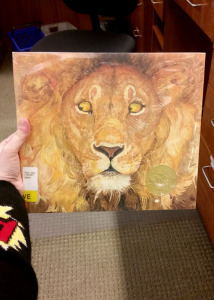
Credit: Hollywood Foreign Press Association
It was a good night for all the winners at the 75th Golden Globes on Sunday, but particularly films like”Three Billboards Outside Ebbing, Missouri,” “Lady Bird” and “The Shape of Water.” While you can bet everybody continued the party into the night, awards pundits have been analyzing just what these wins mean to the final prize of the year, the Oscar.
The relationship between the Golden Globes and the Oscars has always been compelling. Seen as the two most important award shows, they are starkly different in how they do things. The obvious is that the Globes recognize picture and lead actors in two categories; the Academy does not. The Globes are voted on by a small body of journalists from the Hollywood Foreign Press Association; the Academy is made up film professionals from nearly every level that totals almost 7,000. As the Globes are handing out their awards, the Academy is only a couple of days into its voting process for nominees. So, what impact does the Golden Globes have on the Academy, if any?
Let’s start with the big prize, best picture. For most of its 75 year history, the Globes have been awarding the two best picture prizes for Drama and Comedy/Musical, save for its first eight years where it handed out a single award (and 1954 when there was no Comedy/Musical winner) and five years from 1959-1963 when it handed out three (Drama, Musical and Comedy). In total 50 of the 147 Golden Globe winning films went on to win best picture at the Academy. Looking at that in another way though paints a rosier picture. In the Globes’ 75 years, they’ve matched the Oscars 50 times with one of their winners, a percentage of 66.6. So, it would stand to reason then that either “Lady Bird” or “Three Billboards Outside Ebbing, Missouri” has an inside track for the Oscar.
Some other interesting best picture factoids between the Globes and Oscars: The longest streak of a Globe winner going on to repeat at the Oscars is 13, from 1957-1969. The most recent longest streak is three, from 2012-2014. If either “Lady Bird” or “Three Billboards” win again at the Oscars, it will be the second consecutive year after “Moonlight” won for Drama in 2017.
Alright, so what about the actors? Well, when it comes to winning an acting Globe, your chances differ depending on if you were lead or supporting. While again you have to consider that the Globes had two shots for their lead actors and actresses throughout most of its history, the two organizations have matched up 57 times for best actor and 53 for best actress; that does not include the year the Globes gave two trophies to Kate Winslet for lead and supporting, with her supporting turn in “The Reader” making the jump to best actress at the Oscars.
Recent history makes things look especially good for last night’s winners, Saoirse Ronan of “Lady Bird,” James Franco of “The Disaster Artist,” Gary Oldman for “Darkest Hour” and Frances McDormand of “Three Billboards Outside Ebbing, Missouri.” Since 2010, the Globes and Oscars have matched up each year with their winners (more often the Drama winner goes on to win).
Though depending on how you look at things, maybe it is better to win supporting. You essentially half to cut the percentages in half for the lead winners since either would qualify for those stats, but the Globes have always stuck with giving out a single supporting trophy for actors and actresses, meaning the odds are pretty straightforward.
For supporting actors, the Globes and Academy pretty much split right down then middle. 37 Globe winners would go on to repeat, including eight of the last 10; though not the two most recent (sorry Sylvester Stallone and Aaron Taylor-Johnson). Time will tell if Sam Rockwell will break that trend, but many will likely still put Willem Dafoe as the favorite at the Oscars.
Supporting actress has had a slightly rougher go of it overall. A repeat has happened 31 out of 75 times, a 41.3 percent chance. However, like the supporting actor trophy, the ladies have also had a better go of it as of late; six of the last eight winners have gone on to win again at the Oscars, including last year’s winner Viola Davis. Sunday night’s winner Allison Janney is in a likely circuit-long fight with Laurie Metcalf of “Lady Bird” for the Oscar, but a win at the Globes is certainly a nice feather in her cap.
The longest streaks for acting winners matching up go like this: Best actor – 11 (1975-1985); best actress – nine (1987-1995); best supporting actor – eight (2008-2015); best supporting actress – five (2009-2013).
As for the directors, they can rely on slightly more than a coin flip as to whether they will have to give another speech. Best director for the Globes and Oscars have matched up 39 times in 75 years, exactly 52 percent. The last two years have seen repeats, so that’s potentially good news for Guillermo del Toro after his win for “The Shape of Water.”
The longest streak for double winners in directing is only four, though it happened twice (1993-1996 and 2004-2007). Interestingly enough, the longest gap between years when the Globes and Oscars match is also four and has also happened twice (1950-1953 and 2010-2013).
So, if you really want to be scientific with your Oscar predictions, take these numbers into account. Happy calculating.
Share this:





